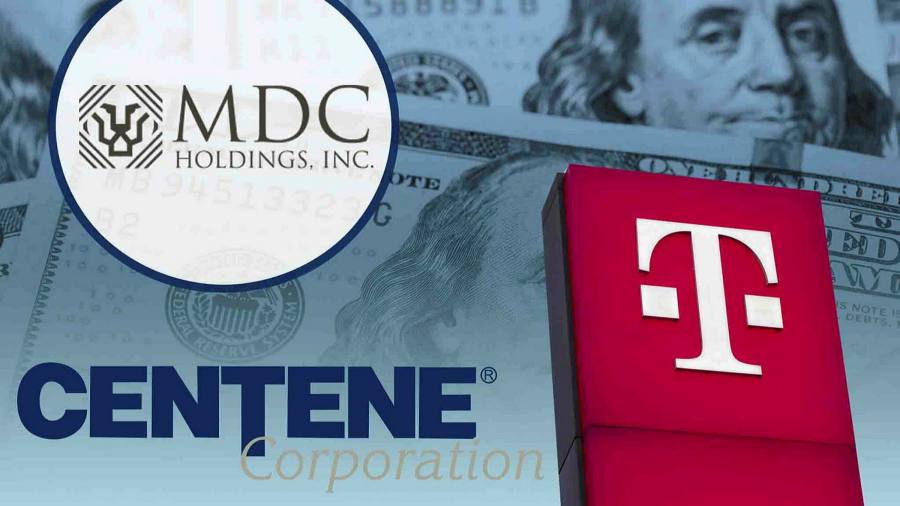[ad_1]
The high-yield bond market needs a new name.Â
This week, the average yield across so-called high-yield bonds in the US fell towards 3.9 per cent. That’s only marginally above what Johnson & Johnson — one of only two pristine, triple-A rated companies left globally — paid as an annual coupon in a 10-year bond in 2011. It wasn’t considered a high yield then. Microsoft — the only other company to hold the triple-A title still — raised 10-year money in 2013 at a coupon of 3.63 per cent. That wasn’t high yield either.Â
Two weeks ago, Centene Corporation became the second company this year to issue a 10-year “high-yield†bond with a 2.5 per cent coupon. Two-years ago, the US government would have paid more.Â
It’s a far cry from the returns on offer when junk-bond king Michael Milken made a fortune in the nascent market, demanding high interest rates for lending to lower quality companies. Even during the excesses before the 2008 financial crisis, average yields only reached a 2004 low of 6.8 per cent, according to data from Ice Data Services.
For investors today, it means taking the same risk with far less reward. “It’s now the high-yield bond market in name only,†said Matt Eagan, a portfolio manager at Loomis Sayles. “I don’t like the fact yields are really low but that’s the environment we are working in.â€
This is not an entirely new phenomenon. In Europe, high-yield bonds have paid even less than the US for some time. Perhaps a better name would be the higher-yield market, which more clearly describes some of the forces at work.Â
The additional yield on offer above Treasuries — called the spread — currently sits at around 3.5 percentage points. This represents the premium that investors demand to be paid for not owning super-safe Treasuries.Â
At its current level, the spread is low but not as low as it has been. The lowest pre-2008 was 2.5 per cent in 2007. Before that, spreads had been below 4 per cent since June 2005.Â
The difference with today is that government bond yields were higher then. Between 2004 and 2006, the US Federal Reserve raised rates from a low of 1 per cent to over 5 per cent. By contrast, the lower bound of the Fed’s target interest rates is now zero.Â
What this means is that investors aren’t pricing the risk of lending to lower rated companies very differently from how they did in past moments of US economic exuberance. The question is whether they should be as optimistic today, given we are only a year into a global pandemic.Â
The argument for optimism is that with the rollout of the vaccines and the reopening of the economy, the US is moving into a growth cycle that will help lift lower quality credits. But cynicism, or perhaps prudence, argues that with spreads so low, there is little room to absorb losses if the recovery fails to take root.Â
“That’s the big risk,†said Eagan. “There is a leap of faith and you have to make a call as an investor. Our view is the economy is going to come back pretty solidly.â€
The economic outlook is not the only factor at play. Also important are how much money investors have to spend, and what other investment options are available.Â
With Treasury yields so low, investors have sought out high-yield bonds to earn better returns: perhaps it should be called the “please just give us some–yield†market. At the same time, options for new bonds to buy are thin on the ground. The result is a wall of money chasing ever-riskier deals, pushing spreads lower.Â
There are other risks, too. Generally, as the economy improves, the Fed raises interest rates. This hurts the price of fixed-rate bonds but can be counteracted by declining spreads due to improving corporate creditworthiness.Â
Yet if the US economy really does take off in 2021, rising interest rates will erode the value of today’s low-coupon bonds, because there isn’t much room for credit spreads to fall further.
The Fed has sought to assuage such fears, committing to keeping monetary policy loose even as the recovery begins to take hold. Even so, inflationary forces are being priced in. The 10-year Treasury yield has already doubled over the past five months.Â
Still, there is an argument for investors to keep lending, regardless of the risk. The Fed proved in March that it has the firepower to step into credit markets in the event of a downturn and prompt a recovery in prices.Â
“When that stops being the case we will have a very bad outcome,†said one debt origination banker. “I think the day of reckoning, if we ever get there, will be cataclysmic.â€
joe.rennison@ft.com
[ad_2]
Source link






